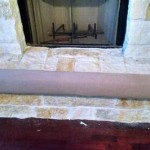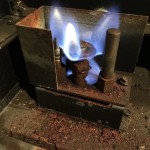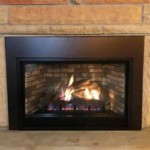Wood Shelf Over Fireplace: Aesthetics, Safety, and Installation Considerations
A wood shelf positioned above a fireplace can significantly enhance the aesthetic appeal of a living space, providing a focal point for decor and personal expression. However, installing and maintaining a wood shelf over a fireplace requires careful consideration of safety regulations, material selection, and installation techniques to ensure both visual appeal and functional longevity. This article delves into the various aspects of adding a wood shelf above a fireplace, covering considerations from safety clearances to aesthetic integration.
The allure of a wood shelf above a fireplace is multifaceted. It introduces a natural element into the room, creating a sense of warmth and inviting ambiance. The shelf offers a platform for displaying art, photographs, plants, or other decorative items, allowing homeowners to personalize their living space and reflect their individual style. Functionally, it can also serve as a convenient surface for storing infrequently used items or providing a dedicated space for holiday decorations. The juxtaposition of the warm, rustic feel of wood against the often-stark presence of a fireplace surround can create a visually compelling contrast, adding depth and character to the room.
Assessing Safety Clearances and Heat Factors
The primary concern when installing a wood shelf above a fireplace is safety, specifically related to heat. Fireplaces generate significant heat, and placing combustible materials like wood too close to the firebox can pose a serious fire hazard. Building codes and manufacturer guidelines typically specify minimum clearance distances between the fireplace opening and any combustible materials. These clearances are designed to prevent the wood shelf from overheating and potentially igniting. It is crucial to consult local building codes and the fireplace manufacturer's specifications before proceeding with any installation.
Several factors influence the required clearance. The type of fireplace, whether it is gas, electric, or wood-burning, plays a significant role. Wood-burning fireplaces, in particular, tend to generate higher temperatures and require greater clearances. The size and design of the firebox also influence heat output. Additionally, the type of wood used for the shelf itself can affect its resistance to heat. Hardwoods like oak or maple are generally denser and more resistant to heat than softwoods like pine or cedar.
Shielding the wood shelf from direct heat is also a critical consideration. This can be achieved through several methods. One approach is to install a non-combustible heat shield between the fireplace and the shelf. This shield can be made of materials like metal, stone, or cement board. Another option is to increase the distance between the fireplace and the shelf beyond the minimum requirements. Adequate ventilation around the shelf can also help dissipate heat and prevent excessive temperature buildup. It is recommended to monitor the temperature of the shelf regularly, especially during the first few uses of the fireplace, to ensure it is not overheating. An infrared thermometer can be used to accurately measure the surface temperature of the wood.
Furthermore, the finish applied to the wood shelf should be considered. Certain finishes, particularly those containing flammable solvents, can increase the risk of ignition. Water-based finishes or fire-retardant coatings are generally preferred for shelves located near fireplaces. These finishes provide a protective layer without significantly increasing the flammability of the wood.
Selecting the Appropriate Wood and Finish
The choice of wood for the shelf is not solely based on aesthetics; its properties directly impact its suitability for placement above a fireplace. Hardwoods like oak, maple, and walnut are generally preferred due to their density and inherent resistance to heat. These woods are less likely to warp or crack under prolonged exposure to elevated temperatures compared to softer woods. However, softer woods like pine or cedar can be used if proper heat shielding and adequate clearances are implemented.
Beyond the type of wood, the moisture content is also a crucial factor. Wood with high moisture content is more prone to warping and cracking as it dries out under the heat of the fireplace. Kiln-dried wood is recommended as it has been processed to reduce its moisture content to a stable and predictable level. This minimizes the risk of dimensional changes after installation.
The finish applied to the wood shelf plays a significant role in its appearance and durability. As mentioned earlier, water-based finishes or fire-retardant coatings are preferred for safety reasons. These finishes offer a range of aesthetic options, from clear coats that highlight the natural grain of the wood to pigmented stains that add color and depth. Polyurethane is a popular choice for its durability and resistance to scratches and stains, but it is important to select a water-based version for safety. Oil-based finishes, while offering a rich and warm appearance, are generally not recommended due to their higher flammability.
The selection of finish should also consider the overall style of the room. A rustic or farmhouse-style room might benefit from a distressed or weathered finish, while a more modern or contemporary space might call for a sleek and glossy finish. The key is to choose a finish that complements the existing decor and enhances the overall aesthetic of the fireplace area.
Before applying the finish, it is essential to properly prepare the wood surface. This involves sanding the wood smooth, filling any gaps or imperfections with wood filler, and applying a primer to ensure proper adhesion of the finish. Multiple coats of finish are typically required to achieve the desired level of protection and aesthetic appeal. It is crucial to follow the manufacturer's instructions carefully when applying any finish to ensure optimal results.
Installation Techniques and Support Systems
Proper installation is paramount to ensure the stability and safety of the wood shelf. The shelf must be securely attached to the wall, capable of supporting its own weight as well as the weight of any items placed on it. The type of support system will depend on the size and weight of the shelf, as well as the construction of the wall behind it.
For lighter shelves, simple brackets can be used. These brackets should be securely screwed into wall studs using appropriate fasteners. Wall studs provide the strongest support, as they are integral parts of the wall's framing. If wall studs are not conveniently located, toggle bolts or molly bolts can be used to anchor the brackets to drywall. These types of fasteners expand behind the drywall, providing a more secure hold than standard screws. However, they are not as strong as fasteners anchored to wall studs and should only be used for lighter shelves.
Heavier shelves require more robust support systems. One option is to use corbels, which are decorative brackets that provide both visual appeal and structural support. Corbels are typically made of wood or metal and are attached to the wall using screws or lag bolts. The number and size of corbels required will depend on the weight and length of the shelf. Another option is to use hidden support brackets, which are metal rods that are embedded into the shelf and extend into the wall. These brackets provide a clean and minimalist look, as they are not visible after installation.
Before installing the shelf, it is crucial to ensure that the wall is level. Any inconsistencies in the wall surface can cause the shelf to tilt or wobble, compromising its stability. A level can be used to check the wall's alignment and make any necessary adjustments. Shims can be used to fill any gaps between the shelf and the wall, ensuring a level and secure fit.
During installation, it is important to use appropriate safety gear, including eye protection and gloves. Power tools should be used with caution, and all safety guidelines should be followed. If unsure about any aspect of the installation process, it is best to consult with a professional contractor.
Maintenance of the wood shelf is also important for its longevity and appearance. Regular dusting and cleaning will help prevent the buildup of dirt and grime. The shelf should also be inspected periodically for any signs of damage, such as cracks or warping. Any damage should be repaired promptly to prevent further deterioration. Depending on the finish used, the shelf may need to be refinished periodically to maintain its appearance and protect the wood from moisture and wear.
Integrating a wood shelf above a fireplace requires a balance of aesthetic vision and practical understanding of safety and building regulations. By carefully considering these factors, homeowners can create a beautiful and functional focal point that enhances their living space while ensuring the safety and well-being of their families.

Collection Of Premium Wood Fireplace Mantels Dogberry

Over Range Shelf Fireplace Kitchen Aga Cooker Prime Or Rustic With Corbels

Fireplace Mantel Colors Wood Beam That Extends To Floating Shelf With Ca Living Room Decor Remodel

Traditional Solid Oak With Corbels Fireplace Mantel Shelf Bonfire

Mantel Shelves Fireplace Shelf Scarlett Fireplaces

30 Tips To Diy And Decorate Your Fireplace Mantel Shelf

Design Idea For Above A Fireplace Stack The Shelves

Large Solid Oak Floating Fireplace Mantel Shelf Bonfire

Why 2024 Is The Year To Buy An Oak Mantel Shelf For Your Fireplace

30 Tips To Diy And Decorate Your Fireplace Mantel Shelf Wood Simple
Related Posts








